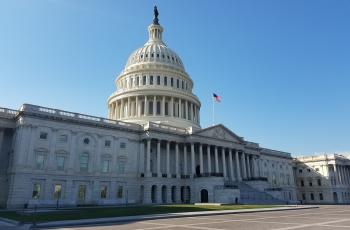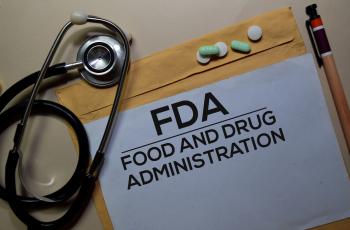When Can I Get the COVID Vaccine if I Have Diabetes?
With the authorizations of two COVID-19 vaccines for use in the US, and more globally, come many questions about when people with diabetes will be able to receive the vaccine. Where do you fall in the vaccine line? Find out more about what you can expect – whether you have type 1 or type 2 diabetes – depending on where you live.
The last year has been defined by the COVID-19 pandemic. The toll it has taken on individuals, families, communities, places of work, our schools, the healthcare system – on every aspect of our lives – has been unprecedented. That is why we deeply applaud the arrival of the numerous COVID-19 vaccines that will help protect people from the virus. The applause of those with diabetes is even greater, since it has been shown that having type 1 or type 2 diabetes increases the risk of severe illness with a COVID-19 infection, and the need for hospitalization and intensive care unit support.
When Can People With Diabetes Expect to Receive the COVID-19 Vaccine?
The big question now is how will the limited quantity of vaccines available be distributed and when will you, as a person with diabetes, be able to get yours? I am hopeful for every person around the world and my comments here will focus on US distribution.
First, it is important to know that the vaccines appear safe and effective for people with diabetes regardless of which FDA-approved vaccine you are given. There are currently two vaccines that have received emergency use authorization in the US: the Pfizer-BioNTech and Moderna vaccines. By clicking the links, you can view information from the CDC about how the vaccines work, their potential side effects, and even clinical trial information explaining the vaccines’ efficacy.
The distribution of vaccines is the responsibility of each state and each state may have a slightly different plan. Most states will use networks within hospitals, healthcare offices, and pharmacies to distribute vaccines to residents. Click here to see the state by state report from the Kaiser Family Foundation, and learn more about your state’s vaccination plan.
In most places across the US, people with type 2 diabetes and obesity will be prioritized in the third phase of vaccination. Type 1 diabetes is not currently considered a high-risk medical condition for this phase.
CDC COVID-19 Vaccine Guidelines
The Centers for Disease Control and Prevention (CDC) has established national guidelines for states to follow. The CDC’s Advisory Committee on Immunization Practices (ACIP) is made up of experts in the field who considered scientific evidence concerning COVID-19 epidemiology, ethical principles, and vaccination program implementation. Here is the staged approach that the Advisory Committee recommended to provide guidance while the vaccine supply is limited:
-
First Stage (Phase 1a): Healthcare workers and long-term care facility residents and staff receive the vaccine. This phase began on December 21, 2020.
-
Second Stage (Phase 1b): Adults 75 years of age and older and frontline essential workers should get vaccinated. Frontline essential workers might include first responders and those who work in education and childcare, food handling and grocery stores, correctional facilities, postal delivery, public transportation, and manufacturing.
-
Third Stage (Phase 1c): Vaccination for adults between the ages of 65 to 74, people ages 16 to 64 who have high-risk medical conditions, including obesity, type 2 diabetes, chronic kidney disease, cancer, a heart condition, etc., and essential workers not included in the second stage. At this time, type 1 diabetes has not been considered a high-risk medical condition for this phase.
-
The JDRF is advocating for people with type 1 diabetes to have access to the vaccine in the Third Stage (Phase 1c). Click here to learn more about the effort.
-
Note: Obesity is a risk factor for severe illness from COVID-19. If you don’t know your BMI and aren’t sure if you have obesity, check your BMI here. If you have obesity, talk to your healthcare professional about accessing the vaccine during the Third Stage.
-
Right now most states are following the CDC guidelines completely. Here are a few exceptions:
-
Washington D.C. and Utah include healthcare workers and long-term care facility employees in Phase 1a, but long-term care facility residents are included in Phase 1b.
-
Nevada, New Hampshire, and Wyoming include law enforcement in Phase 1a.
-
Massachusetts includes incarcerated persons living in prisons and those living in homeless shelters in Phase 1a.
We feel it is critical to ensure that decision makers prioritize health equity in the distribution of vaccines, particularly in light of how COVID-19 has affected communities of color in the US.
Finally, here are two helpful resources:
-
From The Washington Post: keep up with how many vaccine doses have been distributed and administered, by state.
-
From The New York Times: explore different scenarios for the vaccine rollout based on information from the CDC and the National Academies of Sciences, Engineering and Mathematics. You can enter your age, county of residence, profession, and health risk to find your “place in line.”
So, when will you, as a person with diabetes, be able to be vaccinated? For the most part the answer is still unknown. The hope is that the Third Stage (Phase 1c) will enable those with type 2 diabetes to receive their vaccine, and that those with type 1 diabetes will also be able to access it soon. Wherever you fall in the vaccine line, continue to stay safe and strive to do even more than your part to limit the spread of COVID-19: wear a mask responsibly, practice social distancing, limit unnecessary travel, and continue to wash your hands.
For more, check out "What You Should Know About COVID-19 Vaccines and Diabetes."
About Francine
Dr. Francine Kaufman is the Chief Medical Officer of Senseonics, Inc. She is a Distinguished Professor Emerita of Pediatrics and Communications at the Keck School of Medicine and the Annenberg School of Communications at the University of Southern California.


